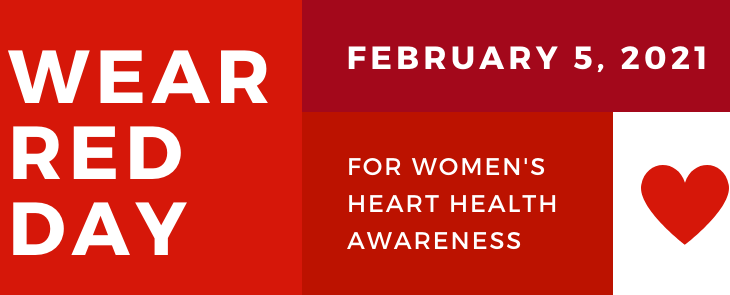Despite the devastating impact of the COVID-19 pandemic, heart disease remains the leading killer of women in the U.S., according to the American Heart Association’s newly released 2021 Heart Disease & Stroke Statistics.[1] At the same time, recent market research has indicated that the youngest most diverse women are the least aware that cardiovascular disease (CVD) is their greatest health threat.[2]
The American Heart Association, the leading global volunteer organization dedicated to fighting heart disease and stroke, is calling on women in Denver to spread awareness on National Wear Red Day®, February 5, 2021, that 1 in 3 women are dying from cardiovascular disease.
Women (and men) are encouraged to “wear red and give” as part of the American Heart Association’s signature movement, Go Red for Women®, nationally sponsored by CVS Health, with support from National Wear Red Day matching partner Big Lots.
Heart disease kills one woman every 80 seconds and takes more lives than all forms of cancer combined.1 Heart disease and stroke also impact the lives of 1 in 3 women – or a third of mothers, sisters and friends – and cardiac events are on the rise in young women in their 20s.[3]
The American Heart Association’s Go Red for Women movement encourages people to take action through the month of February by:
- Wearing red on National Wear Red Day, Friday, Feb. 5, 2021, to raise awareness about cardiovascular disease. The iconic Red Dress pin and other apparel is available at Shop Heart.
- Making a donation to support the lifesaving work of the American Heart Association. Big Lots Foundation will match online donations on National Wear Red Day, up to $333,000.
- Visiting CVS Health and making a donation at the register until March 8. Also, donations can be made online at CVSHealth.com/GoRed.
- Signing up to participate in the lifesaving clinical trial research through the American Heart Association’s Go Red for Women movement and Verily’s Project Baseline: Research Goes Red initiative.
- Joining the conversation by using #WearRedAndGive on social.
1Virani SS, Alonso A, Aparicio HJ, Benjamin EJ, Bittencourt MS, Callaway CW, Carson AP, Chamberlain AM, Cheng S, Delling FN, Elkind MSV, Evenson KR, Ferguson JF, Gupta DK, Khan SS, Kissela BM, Knutson KL, Lee CD, Lewis TT, Liu J, Loop MS, Lutsey PL, Ma J, Mackey J, Martin SS, Matchar DB, Mussolino ME, Navaneethan SD, Perak AM, Roth GA, Samad Z, Satou GM, Schroeder EB, Shah SH, Shay CM, Stokes A, VanWagner LB, Wang N-Y, Tsao CW; on behalf of the American Heart Association Council on Epidemiology and Prevention Statistics Committee and Stroke Statistics Subcommittee. Heart disease and stroke statistics—2021 update: a report from the American Heart Association [published online ahead of print January 27, 2021]. Circulation. doi: 10.1161/CIR.0000000000000950
2Arora S, Stouffer GA, Kucharska-Newton AM, et al. Circulation. 2019;139:1047–1056. Twenty Year Trends and Sex Differences in Young Adults Hospitalized with Acute Myocardial Infarction: The ARIC Community Surveillance Study. https://doi.org/10.1161/CIRCULATIONAHA.118.037137Circulation Published Feb. 19, 2019
3 Cushman, Shay, Howard et al, Circulation. 2020. Ten Year Difference in Women’s Awareness related to Coronary Heart Disease: Results of the 2019 American Heart Association National Survey. https://www.ahajournals.org/doi/10.1161/CIR.0000000000000907
